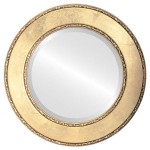How to Screen Mirror Android to Windows 10
Screen mirroring allows users to display the contents of an Android device's screen on a larger display, such as a Windows 10 computer. This functionality offers various benefits, including enhanced presentations, easier media sharing, and gameplay on a bigger screen. Several methods facilitate this connection, each utilizing different technologies and offering specific advantages.
Using the Connect App (Wireless Display)
Windows 10 includes a built-in wireless display receiver accessible through the Connect app. This method leverages Miracast technology, a standard for wirelessly transmitting audio and video between devices. To use this method, the Android device must also support Miracast.
To initiate screen mirroring, users should first open the Connect app on their Windows 10 computer. This is typically achieved by searching for "Connect" in the Windows search bar. The app will then indicate that the computer is ready to connect to a wireless display.
On the Android device, users need to access the screen mirroring or cast feature. The exact name and location of this setting may vary depending on the device manufacturer and Android version. Common names include "Cast," "Smart View," "Wireless Display," or "Screen Mirroring." This setting is often found within the Quick Settings menu accessible by swiping down from the top of the screen or within the display settings.
Once the screen mirroring feature is activated on the Android device, it should display a list of available devices. The Windows 10 computer running the Connect app should appear in this list. Selecting the computer will initiate the connection. The Android device's screen will then be mirrored on the Windows 10 desktop.
Utilizing Microsoft's Your Phone App
Microsoft's Your Phone app provides another method for interacting with Android devices on Windows 10. While not true screen mirroring in the same sense as the Connect app, it offers screen sharing capabilities for select Android devices and allows users to control their phone from their PC. This functionality requires linking the Android phone to the Windows 10 computer via the Your Phone app on both devices.
After linking the devices, a "Phone screen" option becomes available within the Your Phone app on the Windows 10 computer. Clicking this option will display the Android phone's screen within the app window. This enables interaction with the phone through the computer, including using apps, sending messages, and viewing notifications.
It's important to note that the phone screen feature within the Your Phone app is limited to specific Samsung devices and requires certain Windows and Android versions. Users should consult the Microsoft documentation for compatibility information.
Third-Party Applications
Several third-party applications facilitate screen mirroring from Android to Windows 10. These applications often employ different technologies and may offer additional features beyond basic screen mirroring, such as recording or remote control.
When choosing a third-party application, users should consider factors like cost, features, and user reviews. Some popular options include AirDroid, Vysor, and ApowerMirror. Each application typically requires installation on both the Android device and the Windows 10 computer. Users should follow the specific instructions provided by the application developer for setup and usage.
Troubleshooting Common Issues
Several issues can arise when attempting to screen mirror. Network connectivity problems are a frequent cause of connection failures. Ensuring both devices are connected to the same network and that the network is stable can resolve these issues. Firewall settings on the Windows 10 computer might also block the connection. Temporarily disabling the firewall or adding an exception for the mirroring application can help diagnose this issue.
Outdated drivers or software on either device can also prevent successful mirroring. Updating the graphics drivers on the Windows 10 computer and ensuring the Android device is running the latest available software version can often resolve these issues. Furthermore, compatibility issues between devices can also occur. Verifying that both devices support the chosen mirroring method is essential.
Considerations for Optimal Performance
For the best screen mirroring experience, a strong and stable Wi-Fi connection is crucial. A 5GHz network is generally recommended for smoother performance compared to a 2.4GHz network. Minimizing the number of devices connected to the network can also improve performance by reducing network congestion. Closing unnecessary applications on both the Android device and the Windows 10 computer can free up system resources and improve responsiveness during screen mirroring.
The distance between the Android device and the Windows 10 computer can also affect performance. Keeping the devices in close proximity can improve connection stability and reduce latency. Finally, optimizing the display settings on the Windows 10 computer to match the resolution of the Android device can ensure a clear and appropriately sized display.

How To Mirror Cast Your Android Display A Windows 10 Without Any

How To Screen Mirror Android Windows Pc

How To Mirror Your Android Windows 10 With The Connect App

Screen Mirror Your Galaxy Phone And Use Android Apps On Windows 10 Pc With Link To Samsung Ca

Mirror Android Screen To Windows 10 11 Bandicam

How To Mirror Android Pc

How To Mirror Your Android Windows 10 With The Connect App

Microsoft Releases New Windows 10 Preview With Android Phone Screen Mirroring Venturebeat

Swiftly Cast Android To Windows 10 Pc With 5 Approaches
How To Mirror Your Windows 10 Pc An Android Projector








